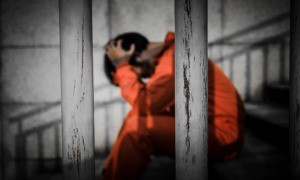News
***Nice resource here from the National Juvenile Justice Network on using the state budget crunch to one’s advantage as an advocate for alternatives to incarceration. The two main sections highlight the key avenues: illustrating how realigning services has helped other states save money, and demonstrating how much incarceration costs per day compared with alternatives. The latter, of course, is best served with a side dish of “incarceration doesn’t actually diminish juvenile crime,” if that is true in your state or jurisdiction.
***The state of New York entered into a settlement agreement with the U.S. Justice Department regarding mental health services at four facilities that Justice began investigating in 2008: Finger Lakes Residential Center, (formerly Louis Gossett Jr. Residential Center), Lansing Residential Center, Tryon Girls Center and the Tryon Residential Center (scheduled to close in 2011).
The settlement means New York will be under federal oversight, but will not have to relinquish control of its entire JJ system to the federal government.
The keys to the settlement are:
1) Increased training of guards at the facilities, paid for by the state. Guards at the four facilities will be limited in terms of when and how they can restrain juveniles, and they will be trained in those specified procedures.
2) An influx of on-site staff in charge of mental health services. New York, will hire five licensed psychologists and more than a dozen social workers and nurse practitioners, and each of the four prisons will have a full-time psychiatrist. The $18.2 million to hire all of them was in Gov. David Paterson’s 2010-2011 budget, and the state legislature has approved it; the money “is a go, it’s solid,” said Sue Steele, a spokeswoman for the Office of Children and Family Services (OCFS).
The settlement should accelerate the state juvenile justice system’s move toward an array of services that keeps more low-level offenders in the community and offers a more rehabilitative milieu to offenders in its facilities.
One thing it will need to keep an eye on here, though, will be the “if you build it, they will come” factor. These facilities likely will emerge quickly as solid options for any judge who has a juvenile in front of him who either is suspected to have, or is already diagnosed with, mental health problems. The facilities with the enhanced mental health treatment options could prove to be too tempting to a judge for a juvenile who needs psychiatric and therapeutic care – even if the offense itself is not something that might warrant secure placement.
This happened with Missouri’s juvenile facilities once the Division for Youth Services started to post the low recidivism rates that have garnered the agency national attention. Judges knew DYS would do a good job caring for a juvenile placed in the state’s facilities, so even offenders whose charges didn’t rate confinement were sent to secure care instead of probation or a community alternative.
“There’s always the potential for that,” said Annie Salsich, director of the Vera Institute’s Center for Youth Justice. She said she supports the settlement, but believes OCFS must now focus on funding alternatives to incarcerating juveniles while avoiding a “purely mental health approach to culture change.”
“If you only look at conditions of confinement, you miss a big part of the conversation,” said Salsich. “It would be a shame if [reform] stopped here, and I think OCFS is committed to it not stopping here.”
Paterson submitted a bill this summer that would really limit which juveniles could be placed in state-run facilities by judges, reports Nicholas Confessore of the New York Times.
***Kurt Friedenauer, who has headed juvenile justice for the State of Illinois for four years, will resign his post at the end of the month. Friedenauer was the first cabinet-level JJ boss in the state’s history, and it is possible he will be the last.
He oversaw the Department of Juvenile Justice when it was part of the larger Illinois Department of Corrections, and former Gov. Rod Blagojevich (D) created an independent department in 2008. Now, Gov. Pat Quinn (D) intends to fold that department into the Department of Child and Family Services, which means whoever replaces Friedenauer will answer to the DCFS director, not directly to the governor.
WBEZ reporter Rob Wildeboer – a primary on the station’s investigation of state juvenile facilities – said Friedenauer is a “nice man” who ultimately could not affect enough change in the culture of his facilities.
UPDATE: Quinn named Arthur Bishop, current deputy director of field operations for DCFS, to lead the newly reconstituted juvenile justice department. Bishop oversees the largest and most visible aspect of the DCFS’s work (500 employees, including most of its caseworkers), and Quinn was smart to tap a guy with high profile and 15 years at the agency to take over. Bishop has no formal justice background, though, so there will certainly be a learning curve.
***Luzerne Update! U.S. District Judge Richard Caputo ruled this week that Luzerne County cannot be held liable in the civil suits involving the indiscretions of former judges Michael Conahan and Mark Ciavarella. “The executive and administrative decisions made by a president judge as the ‘head of the court’ are made as a state actor,” Caputo said.
***The Post and Courier (Charleston, S.C.) editorial board wants South Carolina to protect its Department of Juvenile Justice from budget cuts.
***A former juvenile judge in Los Angeles had a lot of issues with this article in the Los Angeles Times about the use of a panel lawyer system to defend juvenile offenders.
***Nice little story here by Daily Iberian reporter Jessica Goff about St. Martin Parish (Louisiana) Juvenile Training Center, a school for juveniles locked up at the adjacent detention center in the parish. No real news hook, or impetus for the story; it just profiles the staff, history and goings-on inside.





























